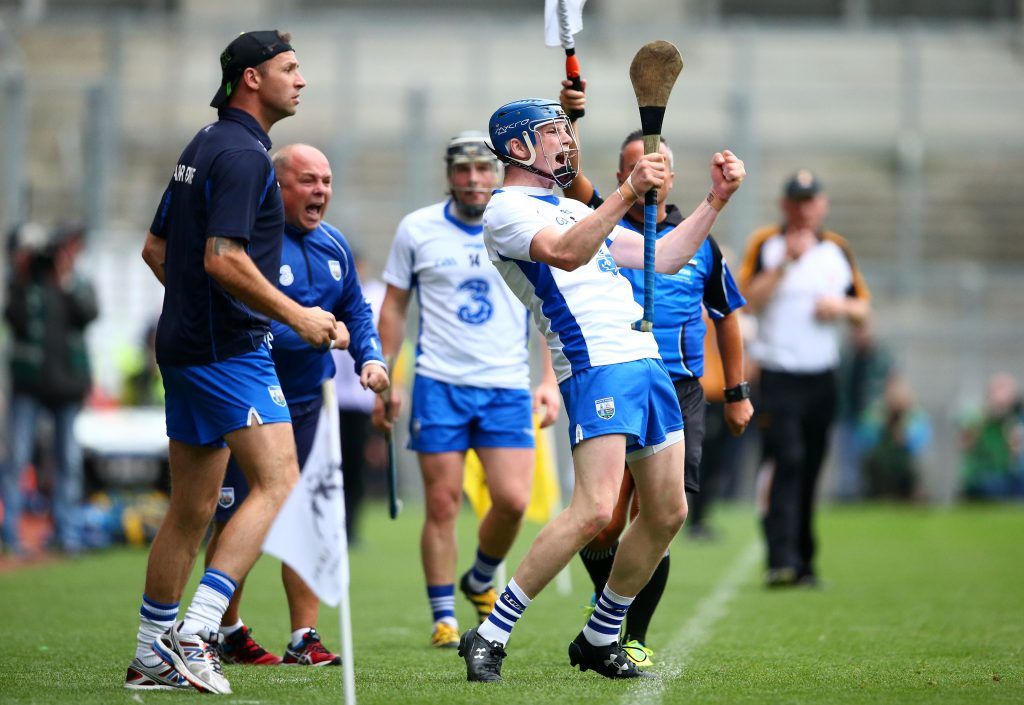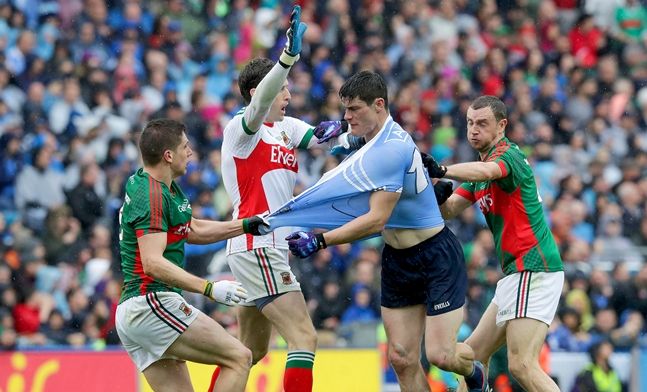Ignore Ger Canning’s weird ‘Rose of Tralee’ style narration and the almost unbearable humility of the recipients, the 2016 GAA All-Stars will be remembered as the first truly digital All-Stars.
All-Stars 2.0, if you will.
But not for the reasons you may suspect. Not for the predictable frothing at the keyboards that occurred when Dublin were denied a second successive footballer of the year award.
Internet rage in the sporting sphere is so ubiquitous now as to be invisible – like air, coffee franchises and the O’Donovan brothers. It no longer really registers, no matter how comical, misinformed or vile it happens to be.
What did you make of the decision? https://t.co/uXgXupTuJC
— SportsJOE (@SportsJOEdotie) November 4, 2016
Sure, you can blame Lee Keegan’s triumph on an anti-Dublin bias, the splitting of the Dublin vote or sympathy for Mayo – none of which adequately explains why the Mayo wing-back prevailed ahead of Brian Fenton and Ciarán Kilkenny.
Similarly, Austin Gleeson becoming the third Waterford man, after Dan Shanahan and Tony Browne, to win Hurler of the Year cannot be explained away by some anti-Tipperary sentiment, the Under-21 influence or Seamie Callanan and Padraic Maher halving the Premier County’s chance of success.
Both Keegan and Gleeson had fine years but, on the strength of their overall performances, neither deserved to win player of the year.
Gleeson flitted in an out of games, was substituted in a catastrophic Munster final and frequently, infuriatingly, took the wrong option in games.
Keegan was one cog in a superb Mayo defence that conceded on average just over 14 points per game and contributed handsomely to the scoreboard but you cannot ignore the fact he was black-carded in the biggest game of the year.
Maher and Callanan both had bigger influences on bigger games than Gleeson, while Fenton was unquestionably the most consistent performer of the summer in Gaelic football.
What both Gleeson and Keegan delivered in spades, however, were highlights. Moments of genius that stuck in the mind, the Facebook timeline and the Twitter feed.
Two supremely talented athletes, their Championship summers can be recalled in bitesize chunks. Gleeson’s sideline cuts, his mazy runs and pirouetting points. Keegan’s happy knack for kicking dramatic, timely points served him well, while the memory of his brilliant goal in the final replay will live much longer than recollections of that black card.
How we view and consume our sports is changing. While county councils up and down the country are waging a grassroots (and irrelevant) war against Sky Sports, the primacy of television is being challenged by newer technologies.
As Una Mullally pointed out, two years before Vine withered, the idea of waiting for ‘Match of the Day’ to watch Premier League goals is long dead.
With other sources of clips available, GAA fans likewise are now less likely to sit through an entire episode of ‘The Sunday Game’, particularly when the highlights are so short to make room for the lengthy analysis.
We all know the places on Facebook, Youtube and Twitter where you can find the clips of the most audacious moments from a GAA match – the big hits, the moments of skill, the crazy scores.
Inter-county footballers and hurlers are fans too, fans with hectic lives, and votes in the Footballer and Hurler of the Year poll. Who is to say they consume their Gaelic games any differently to the rest of us?
Keegan’s battles with Sean Cavanagh and Diarmuid Connolly had a couple of very exciting flashpoints, while his surging runs and points off either foot against Tyrone were GIFtastic.
It was all a damn sight sexier than Fenton’s plugging up and down the field, breaking up play, fetching high balls and simple play-making. The RTÉ Player of the Year has been anointed by a former centrefield great in Darragh Ó Sé, but both ‘The Sunday Game’ and Sky Sports pundit Ó Sé are in the habit of watching all 70 minutes.
Pauric Mahony and Austin Gleeson played the games of their lives – now they just have to do it again on Saturday https://t.co/yRECGa5Mix
— GAA JOE (@GAA__JOE) August 8, 2016
Gleeson’s highlights reel is frankly ludicrous – the spins, the cuts, the runs, the catches, the scores. Watch a Waterford game live, however, and you will see the wrong options taken, the team-mates with arms outstretched exasperated and the runs to nowhere.
Gleeson made a lot more spectacular catches than Paudie Maher in 2016, mainly because no team was stupid enough to play long balls in the direction of the dominant Tipperary wing-back. That is real influence, as is Callanan’s courage and strength when charged with leading the line.
Callanan scored nine points from play in the All-Ireland final, but only one, the two-touch mid-air control towards end of the first half, would be described as spectacular.
There is no criticism here, only a suggested explanation for some awards that have angered many.
Would previous footballers of the year like Marc Ó Sé or Kieran McGeeney still come out on top of a vote held in this new age? Or hurling award winners such as Tommy Dunne or Jerry O’Connor? Would they still catch the eye in an age of shortened attention spans?
Paudie Butler explained to SportsJOE earlier this year how, as the game speeds up, inter-county hurlers only have a split second in which to react.
Our games are getting faster, but the time required to make an impression is also getting shorter and shorter.
Who are the winners of the much-coveted 2016 Wooly Awards? Find out in our GAA Hour Special













































